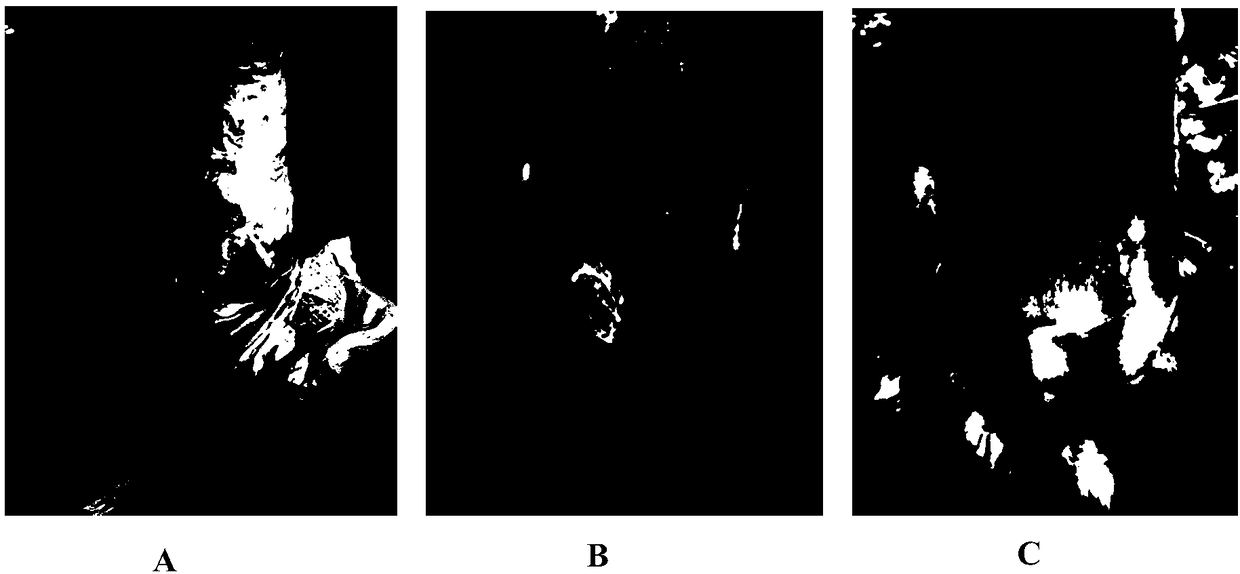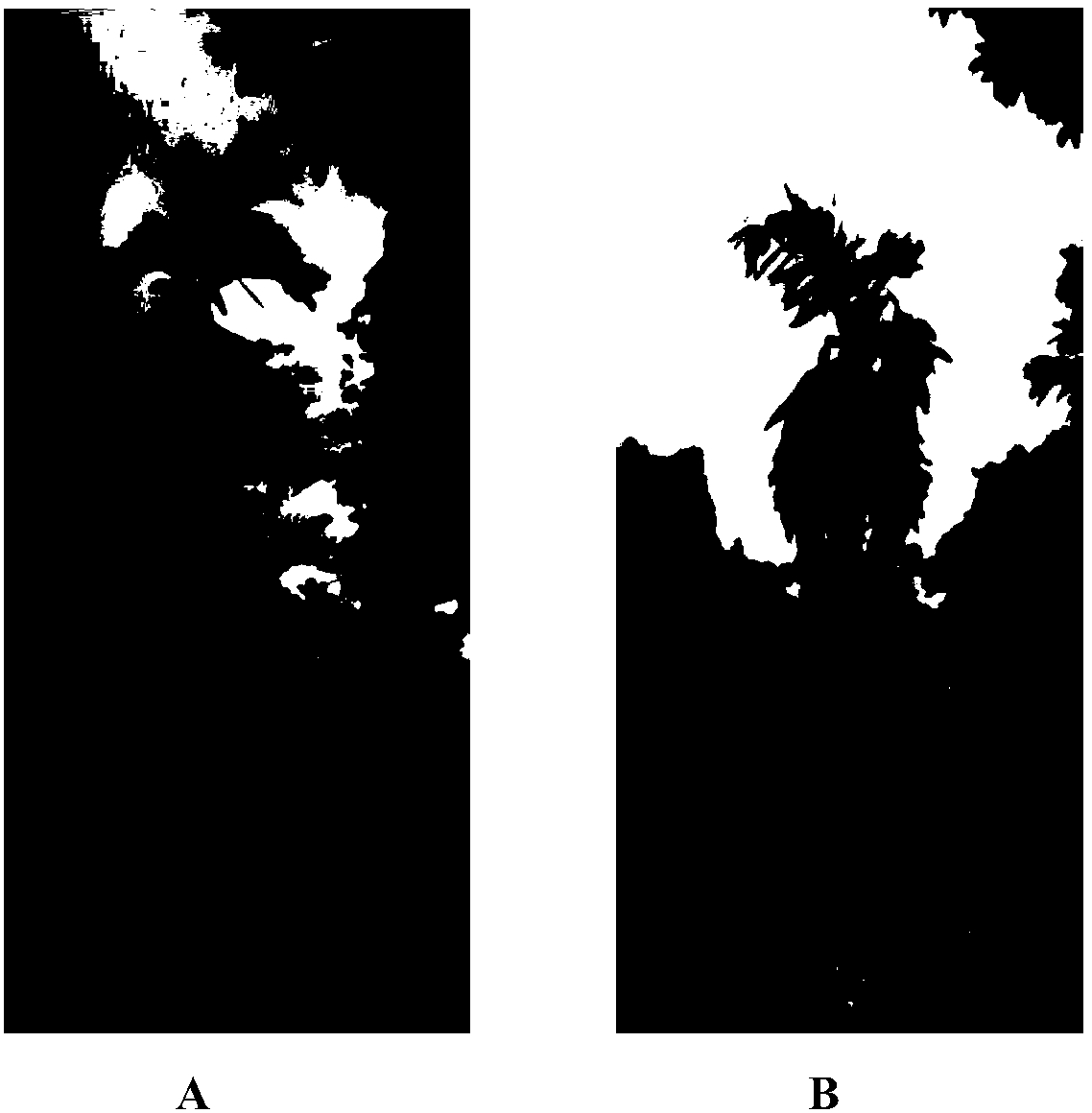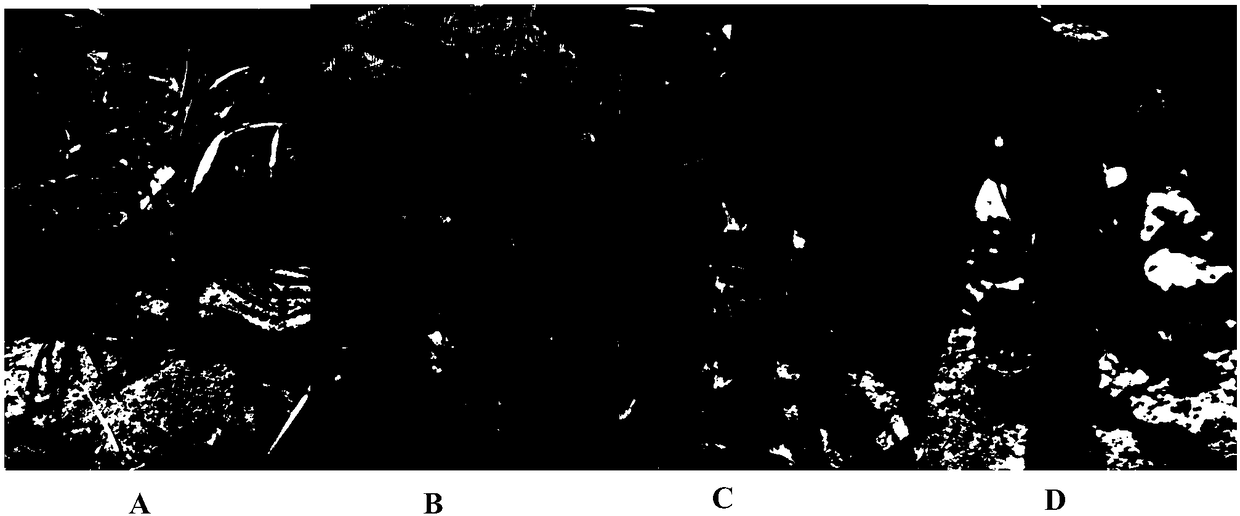Method for measuring pathogenicity of pathogen wood-rotting fungi in basidiomycetes by standing timber stems
A pathogenic, basidiomycete technology, applied in the field of plant protection, can solve the problems of troublesome in vitro operation and low success rate
- Summary
- Abstract
- Description
- Claims
- Application Information
AI Technical Summary
Problems solved by technology
Method used
Image
Examples
Embodiment 1
[0024] Embodiment one: a kind of method utilizing living standing tree stem to measure the pathogenicity of areca stalk rot pathogen (Ganoderma boninensePat.) comprises the following steps:
[0025] 1. Making culture medium
[0026] Sawdust culture medium: mix 82% wood chips, 15% wheat bran, 2% glucose and 1% gypsum according to weight percentage, add water to moisten, mix evenly and pack into small plastic bags with a diameter of 3cm and a height of about 5cm, and seal them , sterilized by moist heat at 121°C for 1h.
[0027] 2. Make the inoculation rod
[0028] Pick 2 mycelium pieces of 1cm × 1cm size from the colony of the betel nut stem rot pathogen that was purified and cultured, inoculate them into the sterilized sawdust medium, and place them at 26°C for 10 days to make the inoculum, to be inoculated The hyphae in the body are covered with bacteria bags and used as inoculation rods for subsequent use.
[0029] 3. Vaccination
[0030] In the season (May) that is suit...
Embodiment 2
[0033] Embodiment two: a kind of method utilizing living standing tree stem to measure willow white rot pathogen [Funalia trogii (Berk.) Bondartsev & Singer] pathogenicity, comprises the following steps:
[0034] 1. Making culture medium
[0035] Sawdust culture medium: mix 82% wood chips, 15% wheat bran, 2% glucose and 1% gypsum according to weight percentage, add water to moisten, mix evenly and pack into small plastic bags with a diameter of 6cm and a height of about 10cm, and seal them , sterilized by moist heat at 121°C for 2h.
[0036] 2. Make the inoculation rod
[0037] Inoculate 5mL of the purified and cultured willow white rot pathogen liquid into the sterilized sawdust medium, and culture it at 28°C for 40 days to make the inoculum. Stick spare.
[0038] 3. Vaccination
[0039] In the season suitable for germ infection (September), choose a 3-year-old healthy willow tree, first use 70% alcohol to spray the surface of the stem within 30cm of the young tree on the...
Embodiment 3
[0042] Embodiment three: a kind of method utilizing living standing tree stem to measure the pathogenicity of rubber tree red root pathogen, comprises the following steps:
[0043] 1. Making culture medium
[0044] Sawdust culture medium: mix 82% wood chips, 15% wheat bran, 2% glucose and 1% gypsum according to weight percentage, add water to moisten, mix evenly and pack into small plastic bags with a diameter of 6cm and a height of about 10cm, and seal them , sterilized by moist heat at 121°C for 2h.
[0045] 2. Make the inoculation rod
[0046] Inoculate 5mL of the purified and cultured liquid for Hevea rubra root pathogen into the sterilized sawdust medium, and culture it at 28°C for 40 days to make the inoculum. spare.
[0047] 3. Vaccination
[0048] In the season suitable for germ infection (September), choose a healthy rubber tree that has grown for 3 years, first use 70% alcohol to spray the surface of the stem within 30cm above the ground of the young tree, and af...
PUM
 Login to View More
Login to View More Abstract
Description
Claims
Application Information
 Login to View More
Login to View More - R&D
- Intellectual Property
- Life Sciences
- Materials
- Tech Scout
- Unparalleled Data Quality
- Higher Quality Content
- 60% Fewer Hallucinations
Browse by: Latest US Patents, China's latest patents, Technical Efficacy Thesaurus, Application Domain, Technology Topic, Popular Technical Reports.
© 2025 PatSnap. All rights reserved.Legal|Privacy policy|Modern Slavery Act Transparency Statement|Sitemap|About US| Contact US: help@patsnap.com



